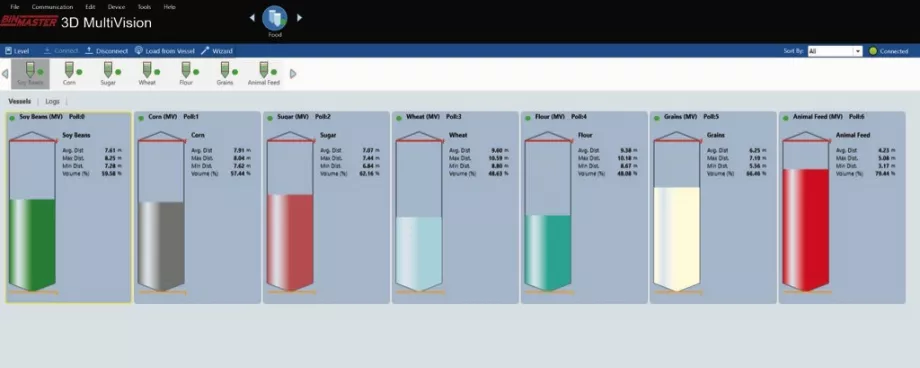The second example (see image below) indicates an alert status, displaying the vessel in red on the screen. The 3D visual indicates that as the vessel has been emptied, material has built up on one side of the vessel. The center of gravity has fallen outside of the set parameters and is displayed in red as -1.03. A red Center of Gravity Alert is displayed at the top of the screen. Plant operations or maintenance can be alerted to aerate or clean the vessel before damage occurs.
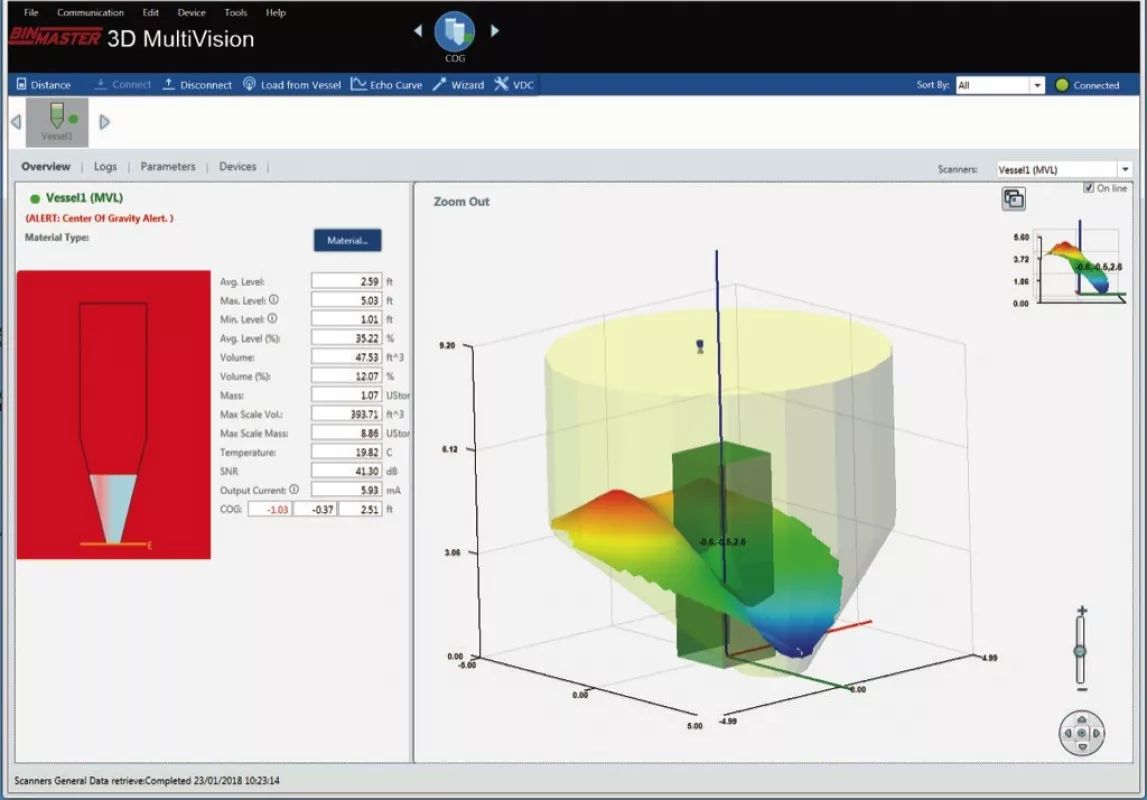
Measure Volumes in a Wedge- or Pie-shaped Silo
Accurate inventory for ingredients in segmented silos
Food processing operations routinely handle many ingredients, some of which can be stored in segmented silos. Tracking inventory by volume in these irregularly-shaped spaces can be tricky, especially for powders or granules that want to build up along the interior walls or the outer silo perimeter. Plant operations or purchasing personnel burdened with managing inventory in pie- shaped segments of silos now have a solution that provides very accurate volume data.
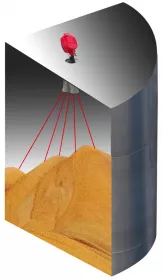
The 3DLevelScanner measures and models the topography of material contained in these unusual pie-shaped wedges. This newest release of 3DVision software update then applies the measured distances to a 3D model of vessel dimensions and converts it to a highly accurate volume measurement.
Other measurement sensors, such as non-contact radar, guided wave radar, or weight-and-cable style sensors measure only a single distance in these formidably-shaped segments. The location of the filling or emptying points or lack of material flow may cause uneven piling of material, which could cause inventory estimates based upon a single measurement to be inaccurate. By comparison, the 3DLevelScanner maps the material surface accounting for variations or buildup then factors in the radius and height of the segment being measured, making the volume accuracy very precise.
Using a system that provides accurate data about the amount and dollar value of material on hand can help reduce safety stocks, increase inventory turns, and pay for itself by freeing up cash that could be tied up in inventory. This can be especially true for high-dollar ingredients being used in many contemporary food products. Additionally, buildup on the outer perimeter of the silo segment or along on the interior walls of each segment can be detected, accounted for in inventory, and addressed by maintenance if needed. The same 3DLevel Scanner can be used for either segmented or round silos, making it a versatile choice over its long sensor life.
Level Monitoring in Flat Storage Warehouses
Breakthrough technology measures level per section
With grain production worldwide reaching record levels, there is a shortage of grain storage as valuable commodities await further processing. An intermediate step to protect grain is the use of large covered storage buildings where grain is piled us- ing overhead conveyors or vehicles. However, due to irregular piling, it is extremely difficult to estimate the amount of grain in these temporary warehouses.
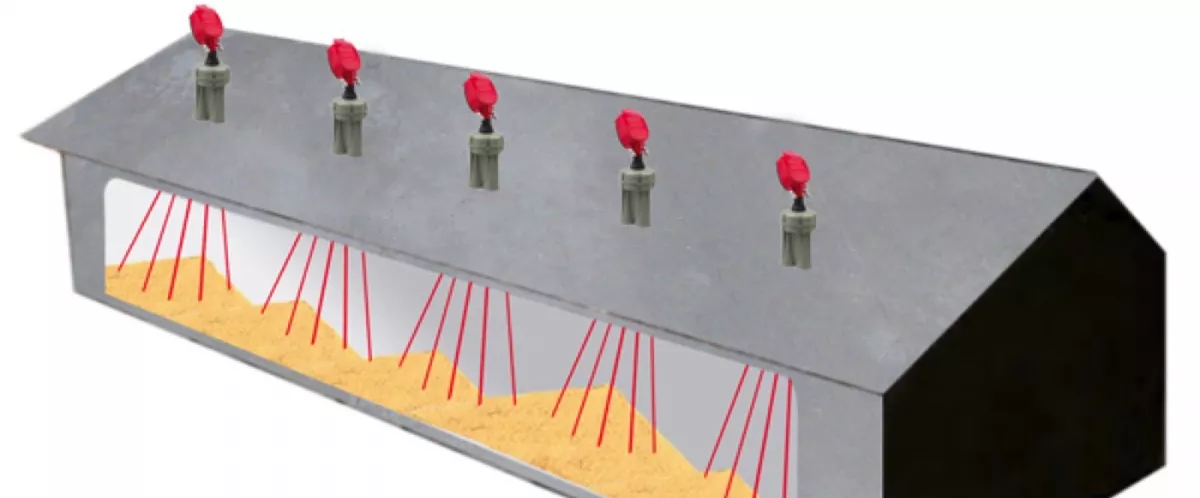
Another revolutionary advancement not offered with any other inventory management system is a new software option that can measure the level of materials piled under structures. Multiple sensors measure and map levels across the material surface, while MultiVision software separates the piled material into virtual sections. Minimum, maximum, and average levels per section are reported for up to 99 unique sections. The data is aggregated to output a visual showing the topography of the entire storage building.
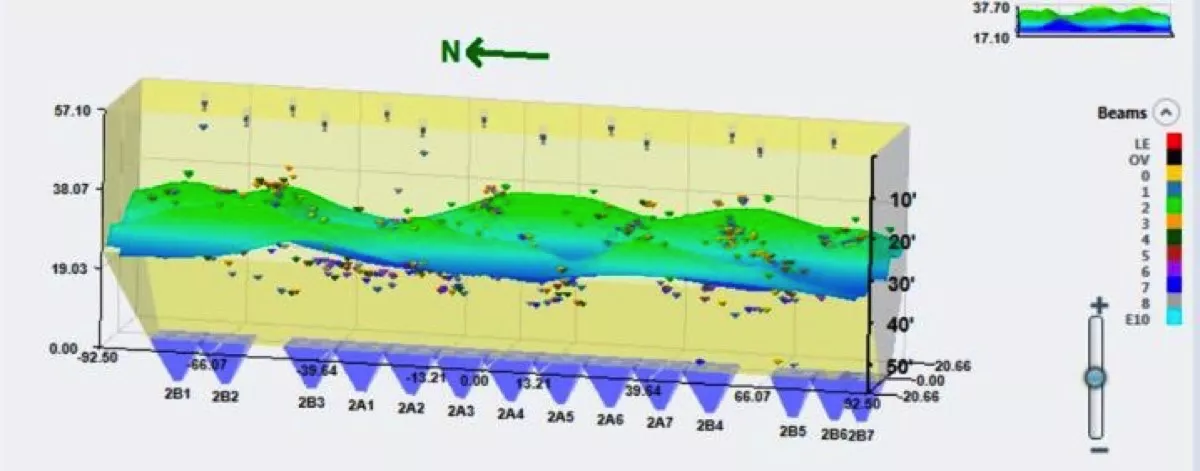
This first-of-its-kind solution is used to estimate inventory and improve production efficiency. Identifying high and low sections allows for automating process control and managing the filling or extraction of materials. In proven installations, up to 20 3DLevelScanners have been mounted in the upper structure of the warehouse roof. The building is virtually divided into sections as small as 1.5 by 1.5 meters with 3D sensors continuously measuring changes across the surface and providing unique visual and data reporting of inventory in the massive structure. This cutting-edge technology is ideal for corn or other grains stored in covered warehouses. In 2009, 3D scanner technology started a revolution in precise inventory management. Their evolution continues to address the unique needs of industry as the worlds of sensor hardware and software intersect with new solutions.
■









